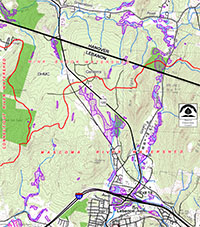In a message sent by the Town on 5/28/2020: Back by popular demand, the 2013 Hanover Trail Map has been re-printed and is available for purchase at the Town Offices, 41 South Main Street.
The price will vary depending upon your method of payment and whether you would like the map mailed to you.
If you come to the Town Offices, the map costs:
$7 if you pay by check; or
$8.50 if you pay using a credit card.
If you would like a map mailed to you, the map plus postage costs:
$8 if you pay by check; or
$9.50 if you pay using a credit card.
The map is also available on the Town website (for free) https://www.hanovernh.org/
Get out and enjoy our wonderful trail system!
Vicki Smith
Senior Planner
Planning and Zoning Department
PO Box 483
41 South Main Street
Hanover, NH 03755
603-640-3214







